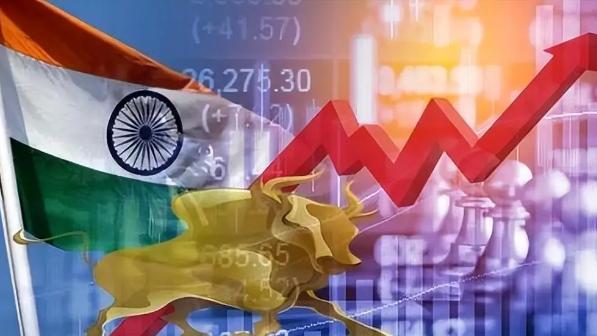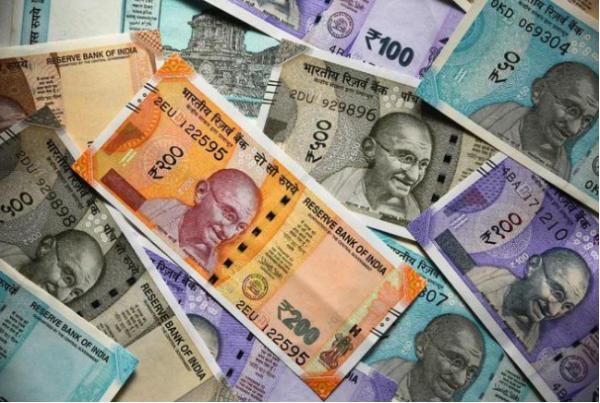
India's GDP has grown by more than 7% for two years in a row; From September to December of last year, the growth rate was as high as 8.4%. Most believe that India is heading for a decade of prosperity that will lift more people out of poverty, while tensions between China and the United States have prompted international investment to trickle into India. In recent years, the Indian government has adopted a series of economic reform and opening-up measures to attract foreign investment and promote economic growth, such as reducing corporate tax rates, simplifying administrative approval procedures, and strengthening infrastructure construction, which have provided favorable conditions for India's economic growth. India is the second most populous country in the world, with a large young population and labor pool. This demographic structure provides huge potential for India's economic growth in areas such as manufacturing and services, while the service sector occupies an important position in the Indian economy, and its contribution to economic growth is increasing year by year. With the rise of the middle class and the improvement of people's living standards, the consumption power of the Indian market has gradually emerged.
The government has set a target of attracting an average of $100 billion in foreign direct investment annually over the next five years. Over the past five years, India has attracted an average of just $70bn a year in foreign investment. This means that to achieve the target of attracting US $100 billion of foreign investment annually, the average annual growth rate must be above 40%, which is a very high growth rate. However, despite India's rapid economic growth, it also faces some challenges and problems. First, India's infrastructure construction is relatively lagging behind, and the development of different industries is not balanced, especially the government attaches too much importance to the mobile phone manufacturing industry, resulting in other manufacturing industries being squeezed by resources. At the same time, India's infrastructure construction lacks unified planning and coordination, and there is a lack of effective cooperation mechanism between various departments and local governments, resulting in insufficient cohesion between projects, repeated construction and waste. This unbalanced development mode limits foreign investors' evaluation of India's overall manufacturing industry and makes them think twice before investing.
The second is the problem of capital and technical management. Although the Indian government has invested a lot of money in infrastructure projects, it still cannot meet the needs of all projects because of its limited financial situation. At the same time, the private sector's willingness to invest in infrastructure projects is also low, resulting in a serious shortage of capital supply, and the investment required for infrastructure construction far exceeds the investment that the public sector can provide. In addition, India's technical strength and management level in the field of infrastructure is relatively weak, lack of effective technical support and professional management team. This makes India satisfy the demand of some foreign enterprises for advanced technology when attracting foreign investment, which seriously leads to the quality problems of the project and the extension of the construction period, increasing the risk of the project and further slowing down the process of infrastructure construction.

Third, the Indian government's policies change frequently, and the Indian government's policies often change from day to day, which brings great instability and risks to the construction of infrastructure. In its history, India has had five significant policy openings for foreign investment, four of which were directly related to the cause of foreign exchange shortages. In the field of manufacturing, the Indian government tries to promote industrial upgrading by attracting foreign investors, but it faces many challenges in the process of policy implementation. This unstable policy environment makes investors cautious about the Indian market, and further increases the impact of infrastructure construction progress.
To sum up, the Indian government needs to take a series of measures to improve its environment for attracting foreign investment. To improve this situation, the Indian government needs to intensify reforms, improve policy stability and transparency, strengthen coordination mechanisms, increase funding, and upgrade technology and management. At the same time, India also needs to strengthen cooperation and exchanges with the international community, learn from the advanced experience and technology of other countries, and promote the rapid development of its infrastructure construction and attracting foreign investment.

报告显示,中国电力投资加速增长,预计2024年电网基建投资将超过5300亿元。
近日,市场迎来了一则引人注目的消息:工业巨头3M公司(MMM.N)在本周五公布了其季度业绩报告,随后股价飙升至近两年来的
最近,外媒给OpenAI算了笔账,今年可能要血亏50亿美元。
近日,巴黎奥运会和世界铁人三项协会联合发布了一项重大决定,宣布因塞纳河水质污染问题,原定于近期进行的奥运会铁人三项首次下
当地时间7月18日,法国巴黎发生了一起令人震惊的持刀袭警事件。
近期,一则重大消息在国际舞台上引起轩然大波,马来西亚宣布加入金砖国家。
调查发现,互联网和智能手机的使用干扰了韩国近五分之一学生的生活。